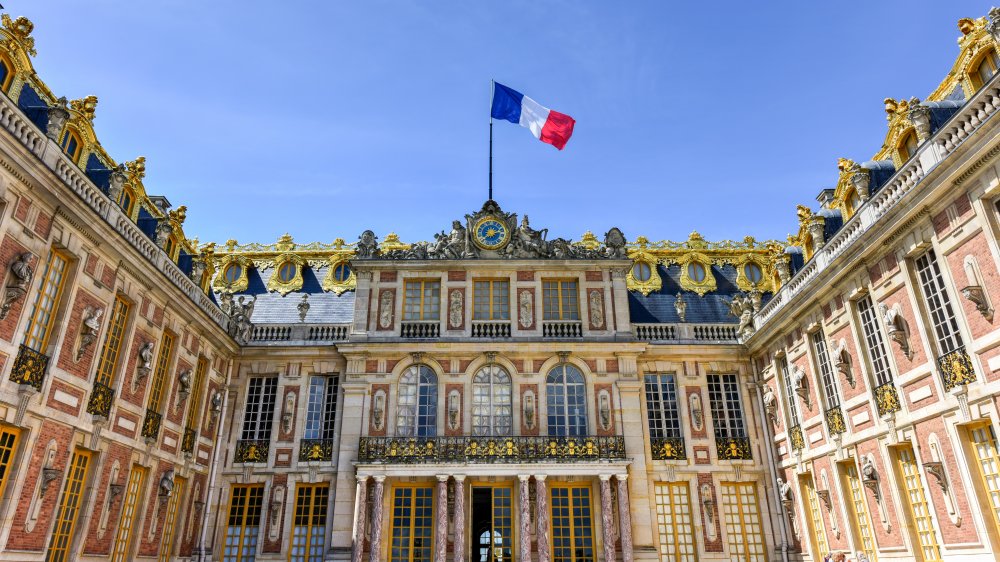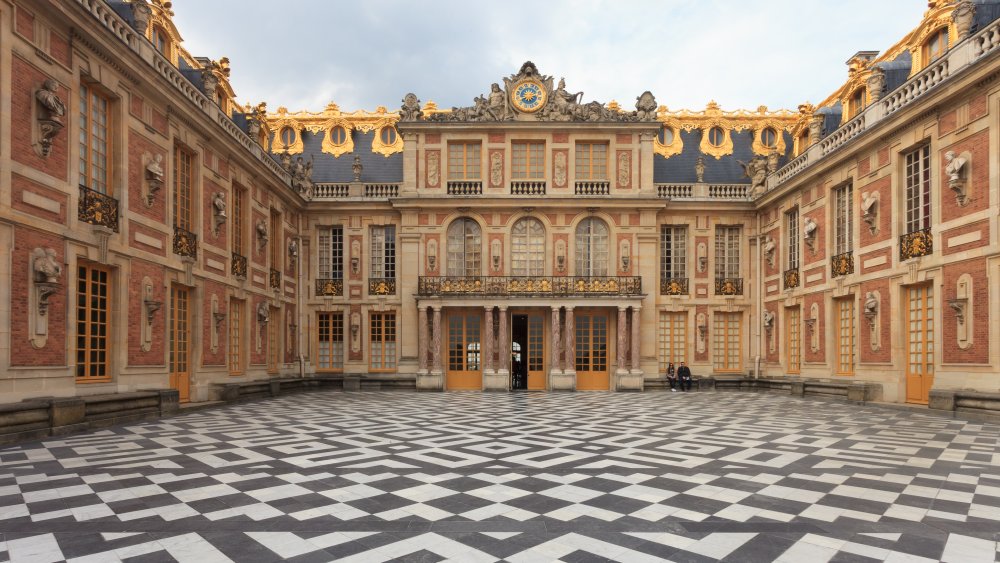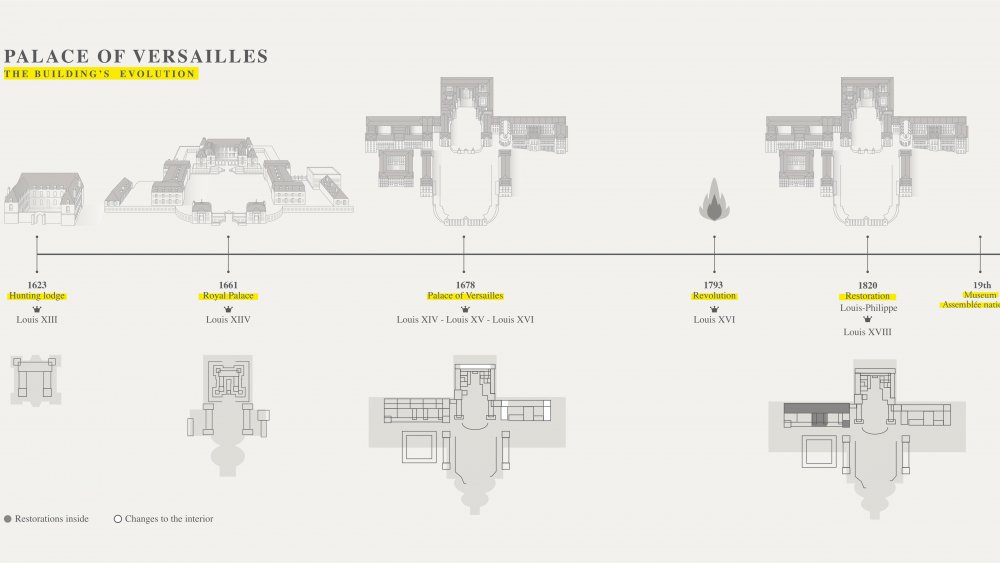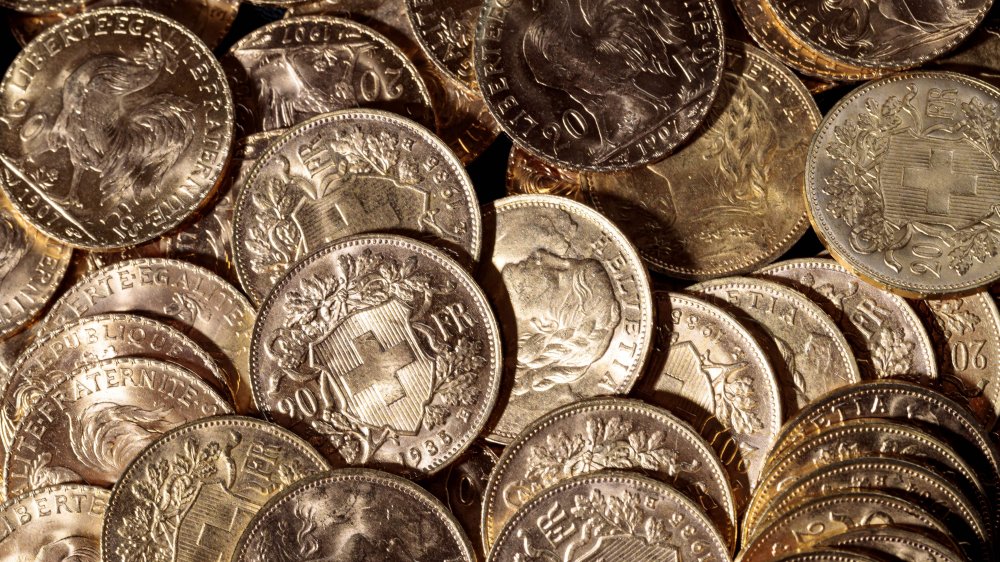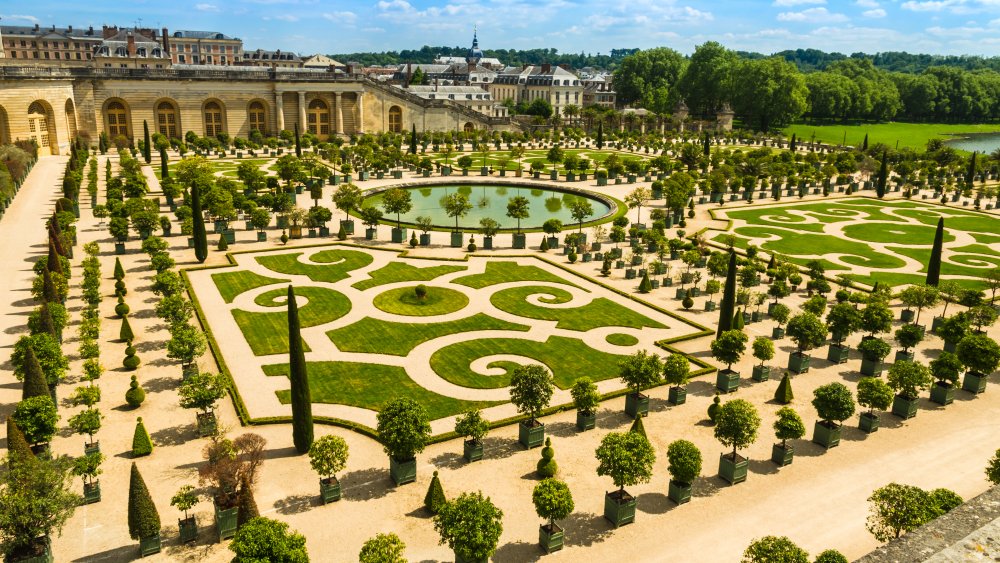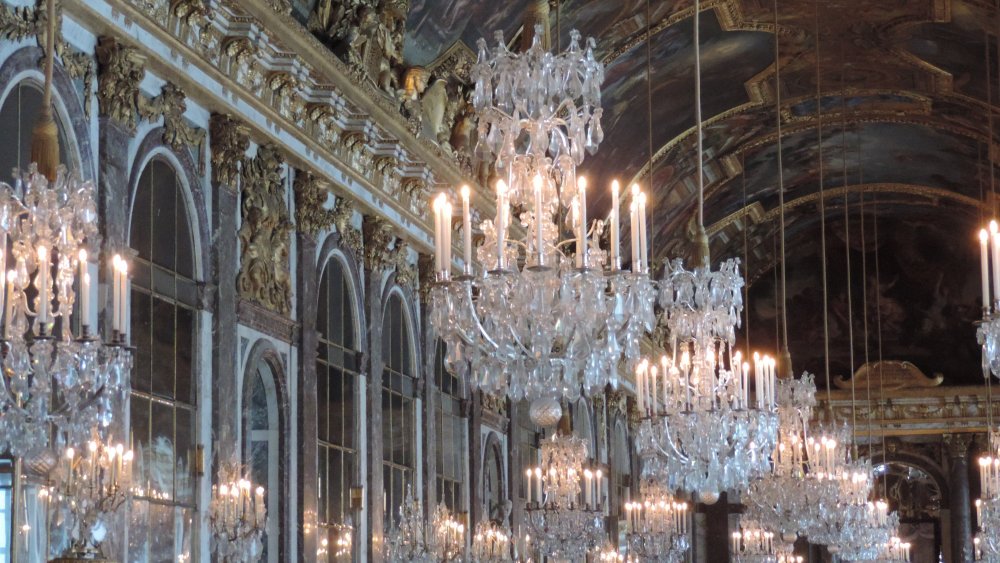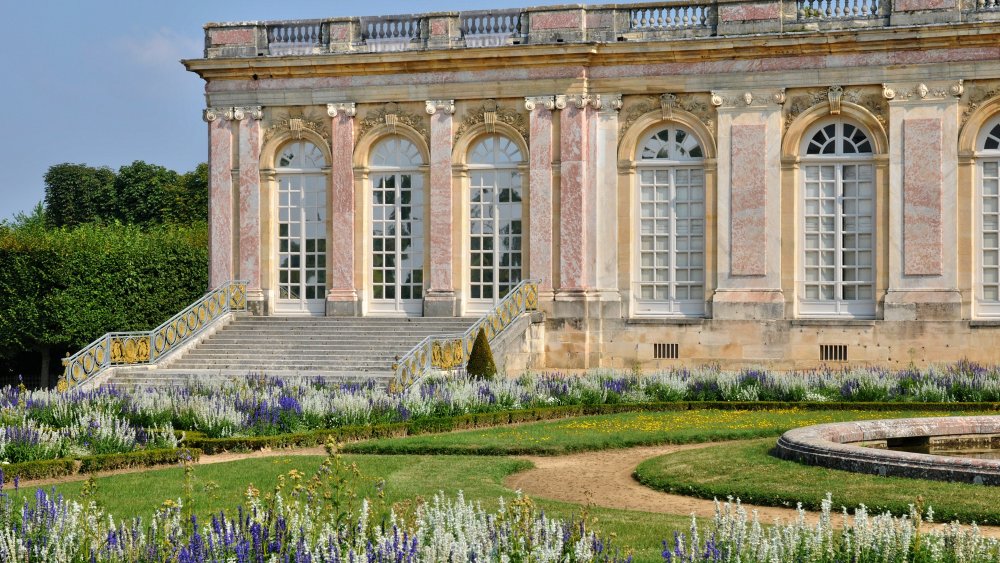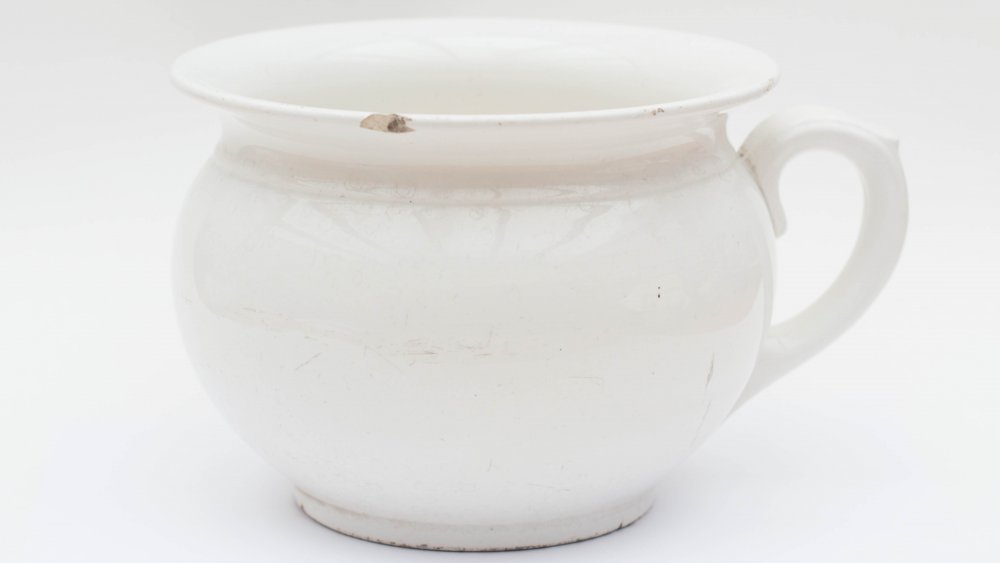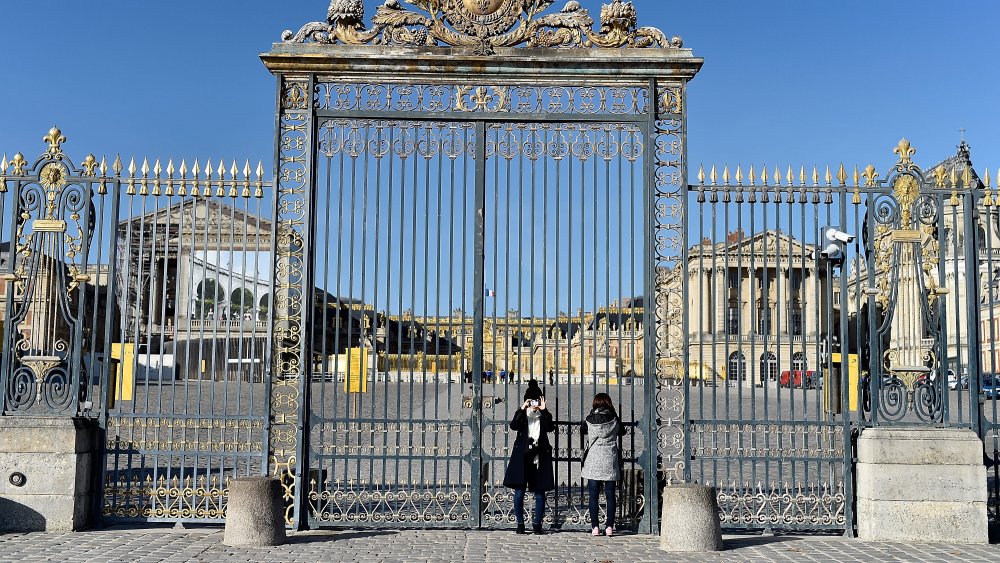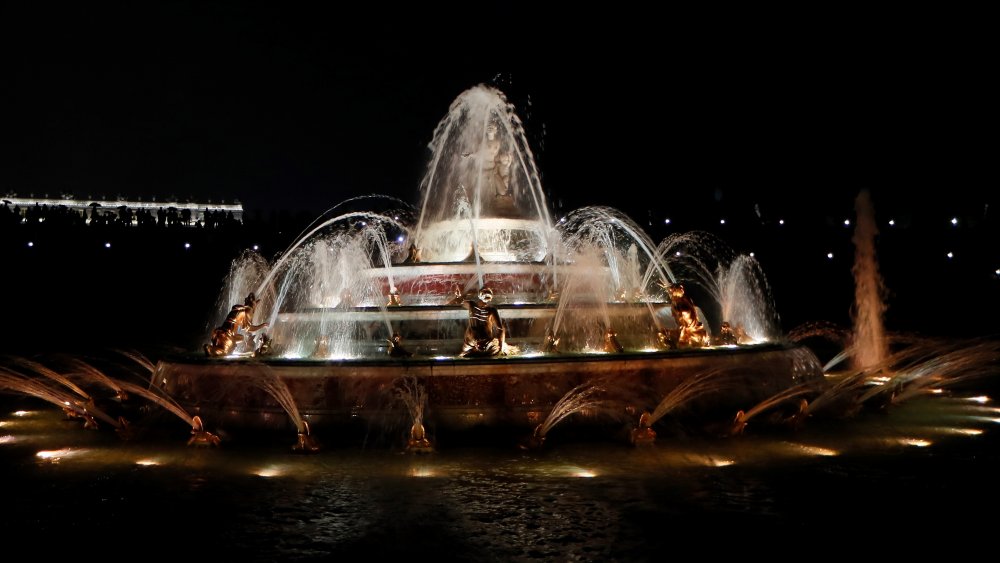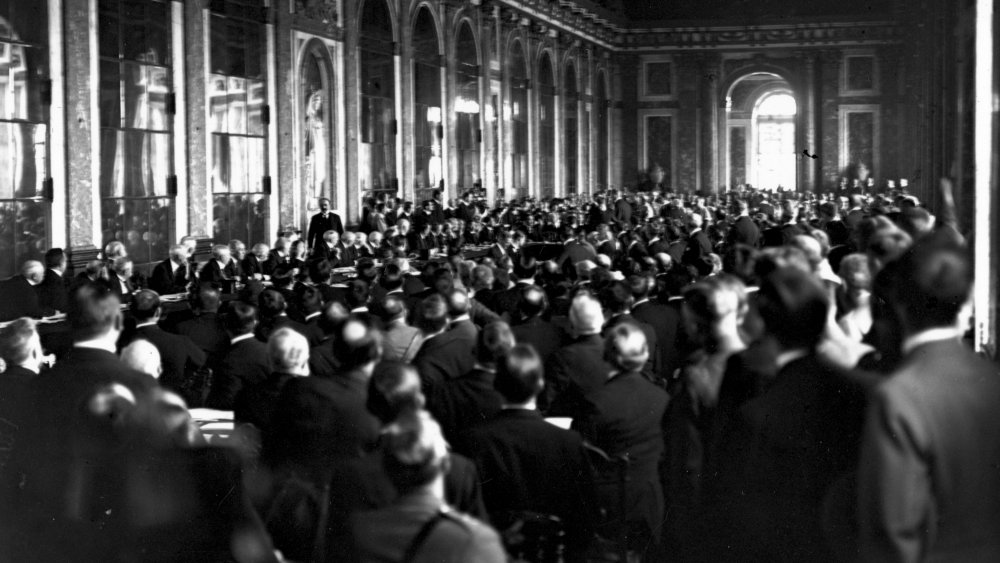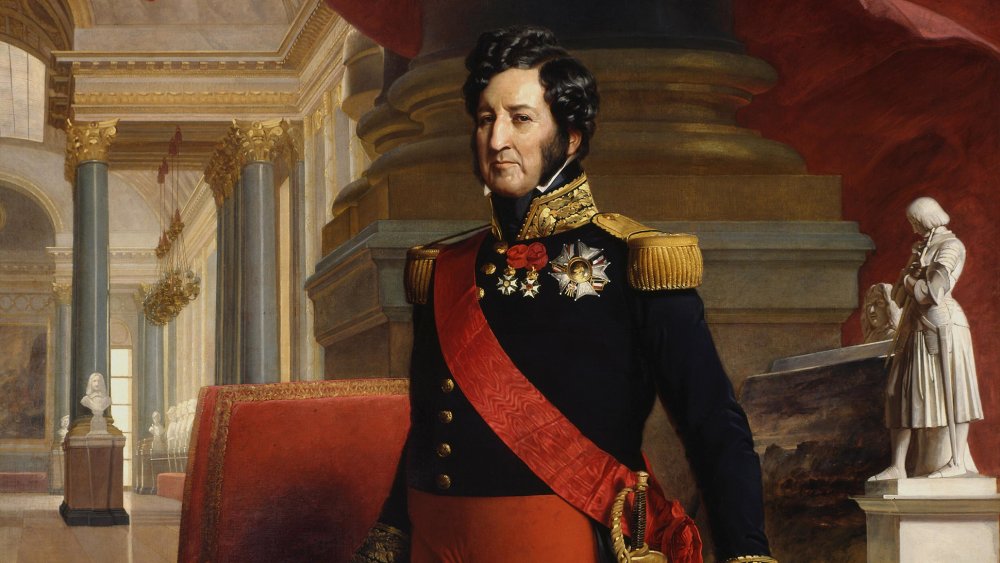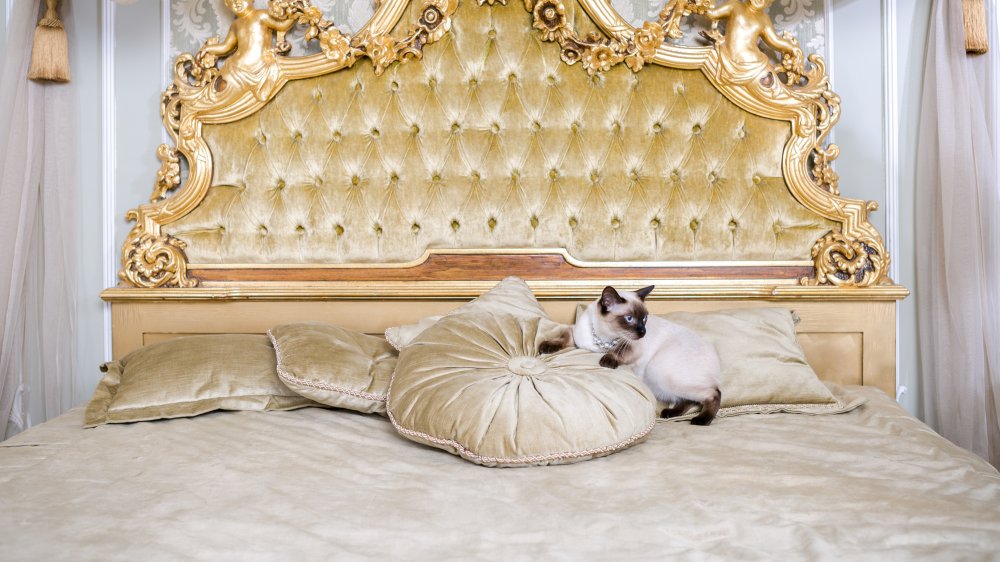The Bizarre History Of The Palace Of Versailles
The Palace of Versailles is one of the most spectacular places in the world. Once a symbol of the power and brilliance of the French monarchy, it remains an incredible achievement in terms of architecture, design, engineering, and opulence. Even by modern standards, the palace is a little extra. According to PBS, this place contains 700 rooms, 2,000 windows, 1,250 chimneys, and 67 staircases. The palace could have as many 20,000 people within the grounds, and that doesn't even cover all the incredible artwork on the walls, the ceilings, and pretty much everywhere.
Little wonder it enjoys more than ten million visitors each year. But behind all of this beauty is a strange story of politics, expense, and hubris. After all, this sprawling estate has hosted some of the most important moments in European history, and it's also seen its fair share of wild parties and crazy antics. From its surprising origins to some shocking modern-day developments, here's the bizarre history of the Palace of Versailles
The Palace of Versailles had very humble beginnings
Today, it's a symbol of extravagance and wealth, but as all great buildings do, the Palace of Versailles has (relatively) humble beginnings. See, the area around Versailles was used as hunting grounds by French monarchs long before anyone built on the site. In fact, King Henry IV went hunting there with his son, King Louis XIII, and they stayed at local inns. After ascending to the throne in 1610, Louis XIII had a hunting lodge built there in 1623 for his personal use, but it was pretty basic. In fact, one of the king's courtiers, François de Bassompierre, described the lodge in his memoirs as something "a mere gentleman would not have been overly proud of." In other words, it didn't look like a place fit for a king.
In 1631, Louis decided to rebuild, expanding the structure into a slightly more elegant and ambitious two-story chateau, and he had gardens laid out around it, but it still wasn't much grander than a very nice country house for anyone with a few francs to rub together. Interestingly, the outer walls of this chateau are still part of the modern palace — the famous Marble Court is framed by the exterior walls of the chateau, making it clear just how small and ordinary this structure was when compared to what was eventually built on the site.
A palace for a Sun King
Louis XIII's son and successor, Louis XIV, wasn't a particularly humble person. He was sufficiently impressed with himself to adopt the sun as his personal symbol and to give himself the nickname "the Sun King." He also had a habit of saying meek and self-effacing things like "L'etat c'est moi" ("I am the State," an expression of his view that the king held absolute power via divine right). And as you might expect, this is a man who wanted a home big enough to rival his ego.
Louis XIV originally lived in the Louvre in Paris like previous kings, but the City of Love was increasingly crowded and restless. According to Live Science, Louis decided to move the government outside the city for his own security ... and in order to force the nobles of his court to come to him in a more isolated area, where he would have absolute control over them. He was obviously never going to be happy with a humble two-story country house, so he spent five decades expanding his father's hunting chateau into the palace we know today.
Once it was done, all of France's most powerful nobles found themselves forced to constantly jockey for position, attending the many, many ceremonial events marking the king's day at Versailles. There was a ceremony for when Louis woke up, for when his boots were put on or taken off, for when he strolled through the gardens, and when he went to sleep. This kept the nobles busy, and because they were in the middle of nowhere, they had few options when it came to doing anything else.
Versailles cost billions and billions
Thanks to the magic of inflation, it always seems like things were much less expensive in the past, but King Louis XIV could spend like few people in history, even people who had entire kingdoms as their personal piggy bank. According to documentarian David Grubin (via PBS), some historians have estimated the total cost to build Versailles at around $300 billion — that's "billion" with a "b." And that's despite the fact that Louis and his ministers insisted that everything used to build the place be locally sourced from France, in order to underscore how powerful and wealthy France and its monarch was.
To put that number in perspective, Buckingham Palace is considered the most expensive house in the world, and it's valued to be somewhere between $2 billion to $5 billion, depending on who you ask. And then there's David Siegel's infamous mega-mansion in Florida that's modeled on Versailles. It's been under construction since 2004, and it's only valued at $30 million. By the way, Grubin also estimates that running Versailles cost the French government about 25 percent of its entire annual income.
The gardens took decades to build
One reason the Palace of Versailles is so spectacular has to do with the extensive, lavish gardens that surround it. And they certainly should be lavish, as it took landscape architect Andre le Norte 40 years to design, source, and construct them. One reason this took so long is that the land where the gardens were to go was pretty much one soggy marsh, so the whole area had to be drained and leveled. Then, trees and other plants had to be cultivated and transported from various regions of France.
On top of all that, 11 fountains were designed and created by sculptors and other artisans, and that's not even mentioning all the time it took design and build the Grand Canal, the two parterres, several large pools, and nearly 20 other water elements. And just like any garden, the ones at Versailles are never really finished. They require constant upkeep, and every century or so, they need a complete re-planting in order to keep everything in top-notch condition. Next time you think your latest home renovation project is going over schedule, think of Versailles.
Versailles' hall of mirrors could have a bloody history
In a legendarily expensive building, the most expensive room might not be obvious to modern sensibilities. We take mirrors for granted today, but back in the 17th and early 18th centuries, they were difficult to make, incredibly expensive, and according to historian Sabine Melchior-Bonnet, the only artisans who knew how to make them lived in Venice, which had a monopoly on the craft.
All of that means that the famous Hall of Mirrors at Versailles is one of the most expensive rooms ever built, because it contains a whopping 357 mirrors, arranged in 17 arches facing 17 windows that look out on the gardens, reflecting the light. The space was originally an open terrace linking the king and queen's apartments, but French weather being decidedly unfriendly to open-air terraces, Louis XIV decided to enclose it. One big challenge was his insistence that all the materials come from France, which had exactly zero artisans capable of making mirrors, so craftsmen had to be lured from Venice to come live in France to satisfy the requirement. According to Time Travel Turtle, rumor has it that Venetian officials tracked the craftsmen down and had them assassinated in order to protect its monopoly.
The story behind those mini-palaces
Considering one major motivation for King Louis XIV to flee Paris and construct an enormous palace in the sticks was to get away from the crowds of increasingly surly people, it might not be too surprising to find out that he came to regret moving the entire French government there, as Versailles became pretty crowded. So Louis XIV built a smaller sub-palace on the grounds to give himself extra privacy.
The Grand Trianon, according to Live Science, is a smaller mini-palace about a mile away from the main palace. King Louis XIV had it built so he'd have a place to go with his mistresses and get away from the crowds at Versailles. It's pretty understandable, as the king and queen were hardly ever alone at Versailles, with everything they did marked by ceremony and crowds of courtiers jostling for face time. Not to be outdone, Marie Antoinette took over a building called the Petit Trianon and built a few other structures, creating a faux village where she could party and relax away from the stultifying ceremony and prying eyes of the palace. So Versailles is like a Russian Doll of palatial structures — it's just increasingly smaller palaces all the way down.
It was designed for looks, not for function
Amazingly for a building that served as the seat of the French government for decades, Versailles was not very efficiently designed. According to author Suzanne von Drachenfels, the king's meals often arrived cold because of the distance between the kitchens and the dining room (leading to the rise of the "cover plate" to keep food warm).
And since the palace was initially constructed in a rural area before the age of modern sanitation, it isn't entirely surprising that there were exactly zero toilets in the place. According to historian Tony Spawforth, an early version of the flush toilet was finally installed in the king's chambers in the 1730s. Spawforth also notes that everyone had to use chamber pots or portable commodes, which is basically a chair with a cutout and a bucket ... and guests sometimes had to relieve themselves in dark corners, in the gardens, or sometimes right where they stood.
Crazier still, while the gardens were absolutely gorgeous, they had such a collection of plant life that it's been said the overwhelming smell of flowers actually made people ill. In other words, Versailles was meant to impress, intimidate, and symbolize the king's power, but it was a filthy, chaotic place that only functioned because of the army of workers and servants swarming the place. And in case you think this is just because old-timey people were disgusting, the Hall of Mirrors wasn't actually restored until 2007.
The Palace of Versailles was a symbol of greed
With the king and the government situated far from Paris, the court was increasingly isolated from its people. Additionally, the cost of little things like Versailles and global wars (including assisting a tiny revolutionary movement in North America) nearly bankrupted the country. As the population sank into poverty, the court lived lavishly, and according to History, by the 1780s, the palace had become a symbol of greed and decadence.
And as you might expect, the commoners weren't exactly pleased with all this. Maybe you've heard of a little thing called the French Revolution? Well, on October 5, 1789, a mob descended on Versailles, destroying the golden gates and demanding the king make an appearance. King Louis XVI did appear, promised the crowd food, and agreed to travel to Paris. Of course, he would never return, and no king ever lived at Versailles again. Contrary to legend, the mob didn't ransack the palace, though they did destroy the original golden gates. Afterward, they left pretty quietly, and the new government eventually sold off most of the furniture and other valuables.
Building the palace helped advance science
Steve Jobs could've learned a few things from the Sun King about inspiring engineers to achieve the impossible. Ironically, after the marshy land was drained in order to build the palace, water then needed to be brought to the location for the lavish fountains to actually work. This was a huge undertaking. Most structures of the time were built near natural water sources, like rivers, but Versailles was far away from anything like that, so whole new inventions had to be created. According to architect, painter, and photographer David Pendery, these included the "Marly Machine," a "civil engineering marvel" that used 14 paddle wheels at the River Seine to pump water to Versailles — a real achievement at the time.
And daily life at the palace inspired plenty of scientific advancement. For example, all the animals kept in the menageries led to advancements in the world of animal anatomy, as scientists had a field day dissecting rare creatures that had passed away on the palace's grounds (such as an elephant). Plus, the maintenance of the gardens led to advancements in the science of botany. In other words, Versailles presented a challenge, and the best and brightest in France responded.
The beginning and end of empires
The Palace of Versailles was the focal point of a lot of European history. First and foremost, of course, it represented the pinnacle of power for the French monarchy, as the Sun King was the most singularly powerful and longest-reigning monarch in French history. It's also where the monarchy basically fell. When Louis XVI walked out of Versailles in 1789, he apparently assumed he'd be back, but four years later, he was guillotined, and the monarchy was abolished.
As Live Science notes, Benjamin Franklin secured French support for the future United States at Versailles, and the Treaty of Paris that ended the war and granted the American colonies their freedom was signed there in 1783. The impressive yet incredibly weird Napoleon lived there for a little while, and after the Franco-Prussian War (which was a disaster for the French), the 1871 Treaty of Versailles created the German Empire when it was signed in the Hall of Mirrors ... and that said empire was later effectively destroyed by the 1919 Treaty of Versailles, also signed in the Hall of Mirrors (pictured). Basically any major event in European history during the 19th and 20th centuries had a pretty good chance of happening at the palace.
The story of the Citizen King
After the French Revolution, France simply couldn't make up its mind concerning the type of government it wanted. As noted by Smithsonian magazine, France is currently run by what's called the Fifth Republic, because after the French Revolution, the country flipped back and forth between democracy, monarchy, military dictatorship, and back again. And when King Louise Philippe was elected king in 1830 after yet another revolution, he was known as 'the Citizen King' and was quite popular.
Louise Philippe didn't get to be king by being dumb. He navigated the chaotic politics of the time with shrewd intelligence, and he knew that the French people weren't going to tolerate any king who reminded them of the past. And since the Palace of Versailles was a huge symbol of that past, there was no question about living there. Instead, Louise Philippe publicly withdrew its status as a royal residence and ordered it to be permanently renovated and turned into a museum. He worked on this project until he was also, inevitably, overthrown in 1848.
The Palace of Versailles is now a luxury hotel
As Fortune reported back in 2015, Versailles is an expensive site to keep up, and the French government has been seeking ways to make it pay for itself, so they put out a request for bids on renovating some of the palace and creating a hotel. And that plan to host a five-star hotel on the site has finally come to fruition.
The Airelles Château de Versailles, Le Grand Contrôle hotel, set to open in the spring of 2020, will be the only hotel actually inside the palace where Marie Antoinette once lived. The Airelles company is renovating a few of the old buildings to make 14 luxury rooms, and the space will include fine dining, a luxury spa, and an indoor swimming pool. All that and the ability to stroll through the Sun King's gardens pretending to be royal will probably not be cheap, though actual room prices haven't been determined yet.
